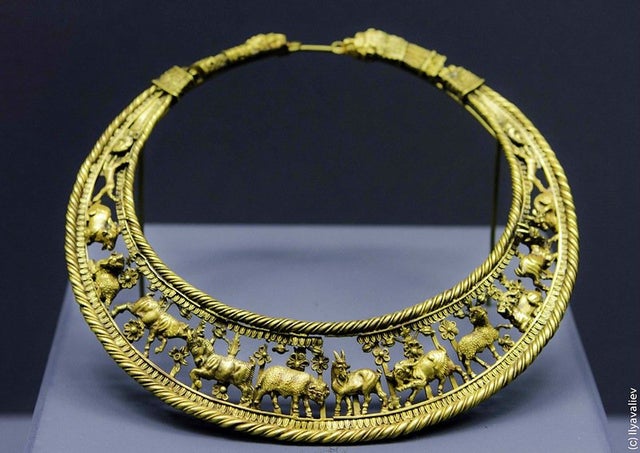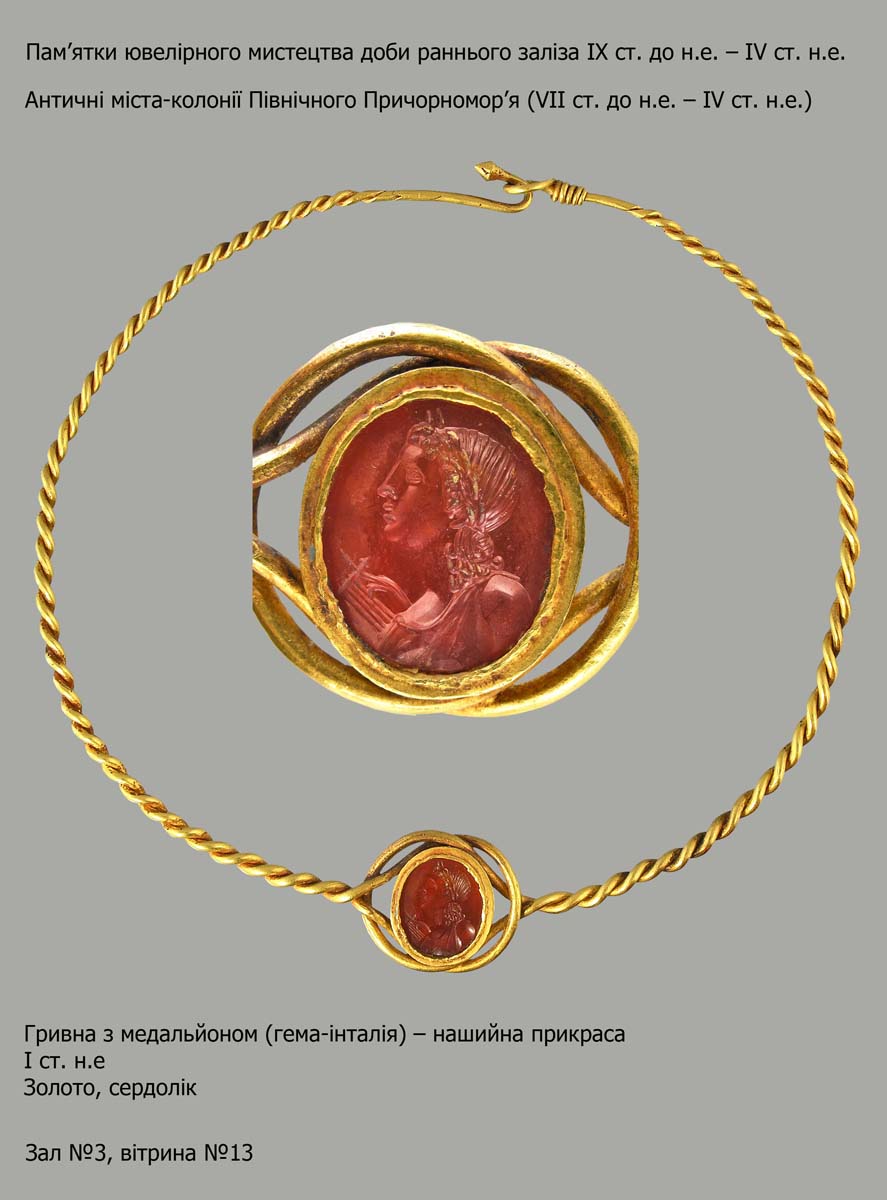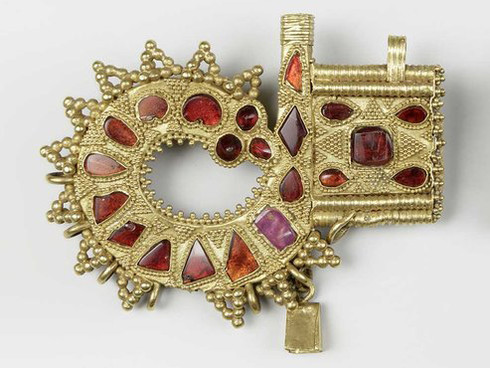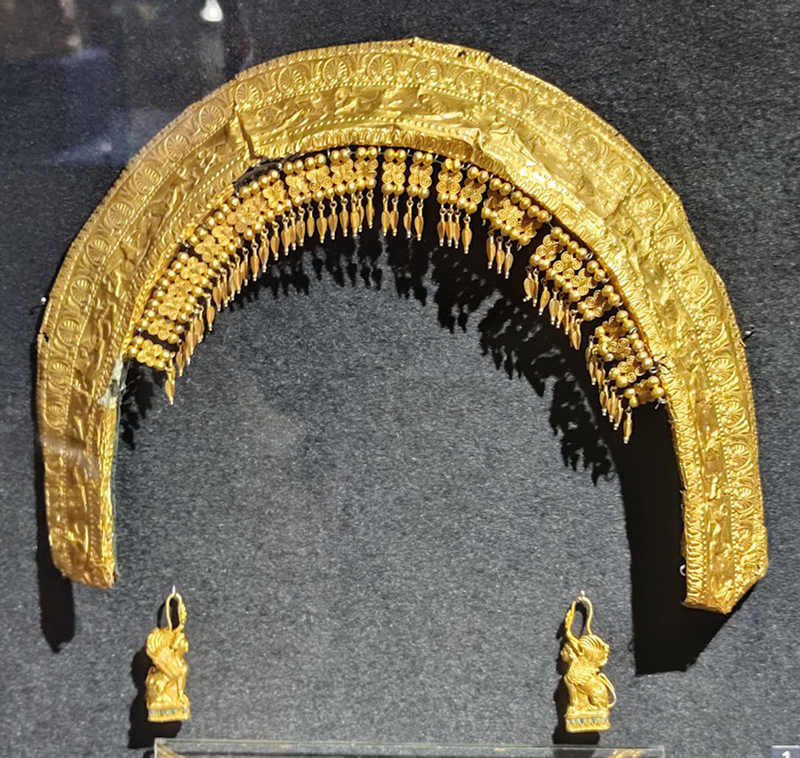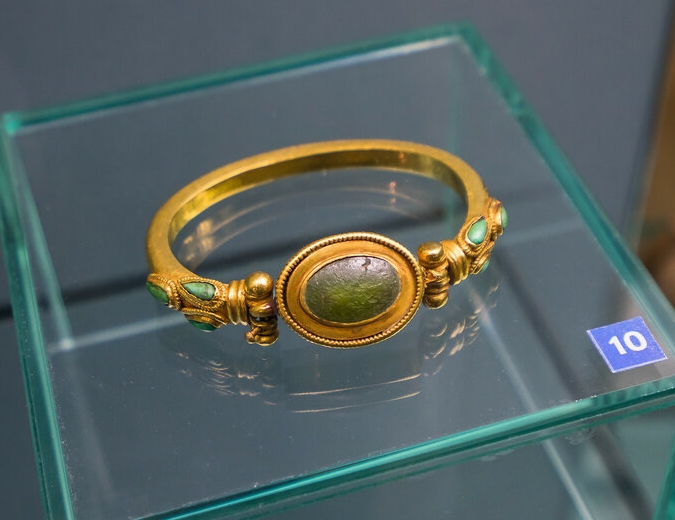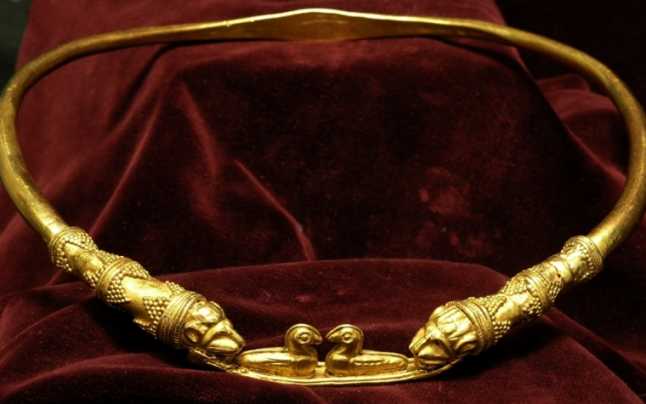This post is based on the article by Professor Mikhail Treister, Early Hellenistic Jewellery in the Burials of the Nomads of Southern Urals, with my translation from Russian.
In Western Kazakhstan near the city Aksai a group of three Tungush burial mounds was discovered. In 2002 in one of the mounds gold objects were found that are currently stored in the West Kazakhstan Regional Museum of Local Lore in Uralsk.
Not in the archives of the Institute of Archeology in Almaty, nor in the archives of the West Kazakhstan Center for History and Archeology in Uralsk, any report on excavations can be found. “According to the kind of report by A. Bisembaev, a large “chamber grave” with a robbed burial was excavated in a long barrow.”
Based on similar jewelry from Asia Minor, Black Sea region and Southern Italy the find from the Tungush mound can be dated between the middle of the 4th – beginning of the 3rd century BCE.
That makes this find “the earliest of the Hellenistic jewelry found in the burials of the nomads of Asian Sarmatia and the easternmost finds of such jewelry in general within the steppes of Eurasia.”
Among the finds there is a heart-shaped ornament with filigree decoration (Fig. 1, 1-2). “On the front surface, along the edge, the plate is surrounded by soldered twisted wire. At the end of the tip, the wire formed two curls of a rounded shape and one (between them) – oval. Similar curls adorn the base of the plate. From them, a seven-petal palmette formed by soldered twisted wire “grows”. To the left of the base of the palmette, the ornament in the form of a “running wave” of scrolls continues. On the reverse side, there were originally two narrow loops with forged ends coming one behind the other from a smooth strip of rectangular cross section.” [M. Treister]
According to M. Treister this ornament it is an ending of a necklace. He writes that such arrowhead endings adorned necklaces in the form of wide stripes formed by several joined chains. [give here an example of a stripe, compare the measurements of the endings! Hermitage, Magna Graecia]

[rectangular ornament similar to the one from Bulgaria, burial of a priestess; picture here]
M. Treister, Early Hellenistic Jewellery in the Burials of the Nomads of Southern Urals (in Russian)
[Раннеэллинистические ювелирные изделия в погребенияхкочевников Южного Приуралья]
https://www.academia.edu




